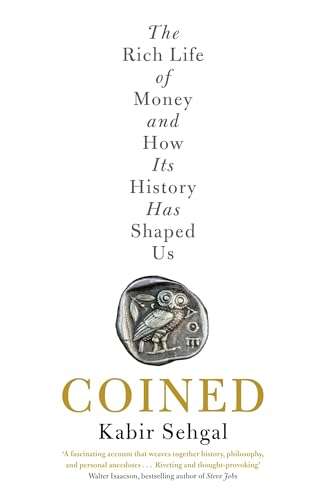Published by John Murray, 2015, illustrated, index, 317 pages, condition: basically as new.
Money is more than just coins and banknotes; it is an idea that shapes the way we understand and organize our world. Here bestselling author Kabir Sehgal travels the globe, including the Galápagos â where he explores the origin of currency exchange â and the Federal Reserve in New York, and mixing anecdote with research describes the development of money, its place in our culture, and the death and destruction it can bring about.
What is the book really about? Another entry in my tour through the philosophy of money. A good stop along that path. Sehgal considers a lot of issues: what in our brains seem to make us accept the idea of money, seem to make us want money, and trust or distrust various concepts of money. He ponders the history of money in different cultures, considers whether money grew out of barter or out of credit (credit wins here), discusses the concept of backing symbolic money with so-called "precious" metals or with the full faith and credit of the state (the way we do now, and the only reasonable way to conduct a modern economy) and he ponders the future of money in a world where financial transactions are largely conducted by transferring numbers from one numbered account to another. He touches on Bitcoin concepts, and ends by talking with numismatists about what they learn about history, culture and aesthetics from collecting historic coins. A dense topic, but handled in a way that made it as transparent as I think it could be. I was impressed by the range of ideas that he found to cover, especially the extended discussion of the psychology of money.
What will you remember about the book? I will remember his delving into the monetary history of odd cultures, like medieval Thailand, and the colonial Philippines. I will remember the pondering of how our brains seem to respond to money. I will remember the discussion of the importance of the aesthetic aspects of money

